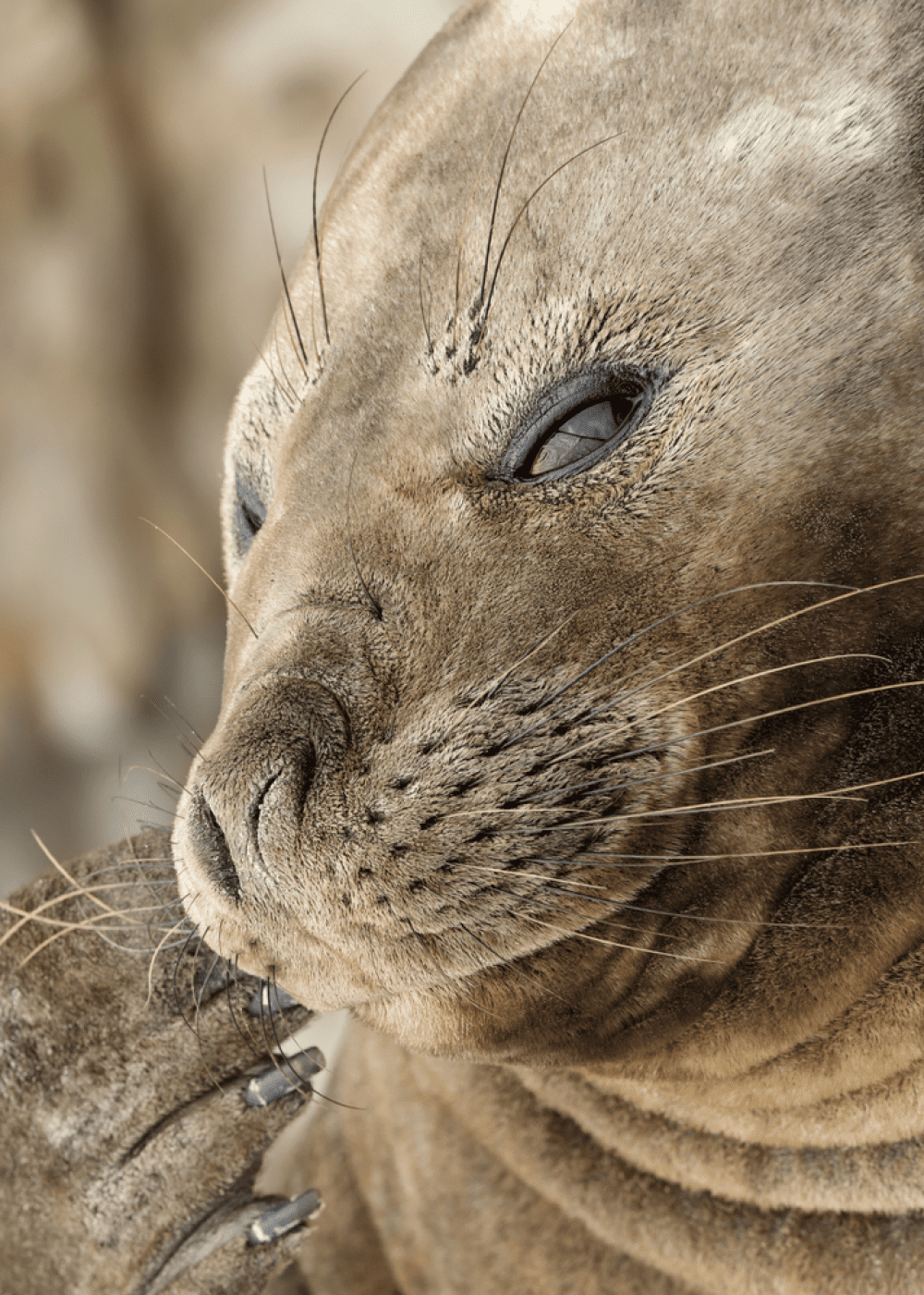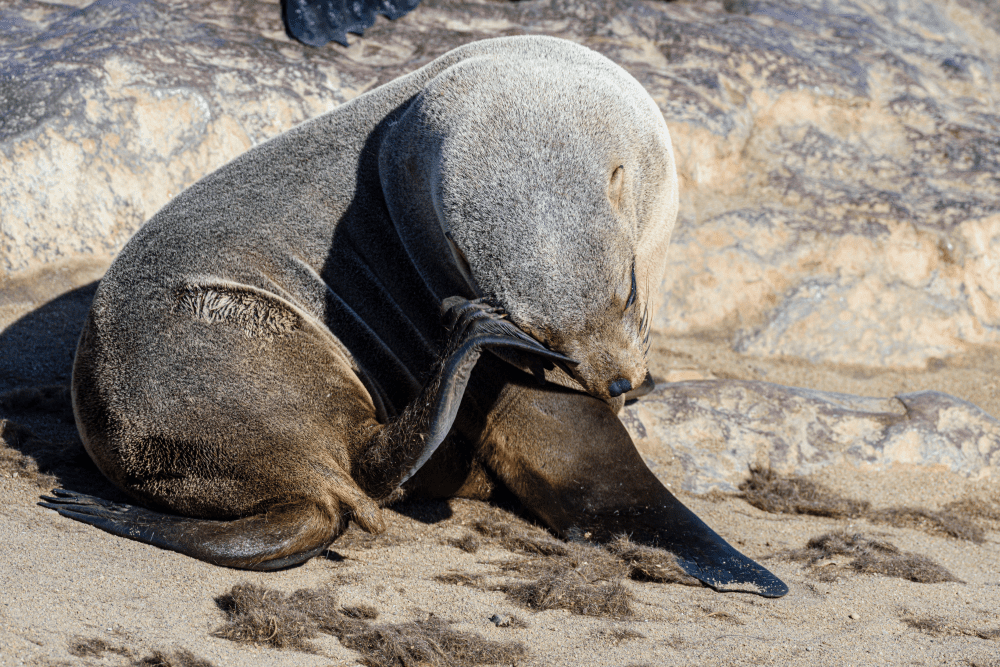Seals get a good rap as one of the cutest marine predators swooshing through our oceans, but did you know that they have nails? Zookeepers become occasional manicurists for their seals and sea lions, many species of which have nails similar to those on our toes and fingers on their flippers.
Curiously, the seal nails look as though they’ve been randomly slapped halfway up the flipper in fur seals, but this is because they sit where the toe bones end. The rest of the flipper is made up of cartilage which is bendy and good for swimming, but they need the stiffness of the toe bones to effectively use their seal nails to groom the fur on their backs.

“Kitty got claws,” sassy elephant seal, 2022. Image credit: Giedriius / Shutterstock.com
Fur seals use their nails constantly for grooming which keeps them in check, but for other less fashion-forward species like harbor seals, the nails on their front flippers can get a little long in captivity where they’re not scrambling on rocks in wavy waters. While they complement fierce photoshoots like the image above, in captivity it’s helpful to keep them well trimmed so keepers will step in with dog nail clippers.
Seal nails, like humans’, are made of keratin, meaning that these animals are similarly vulnerable to conditions like fungal infections which can affect nails and the nail bed.

Fur seal hind flipper nails are good for keeping coats in check. Image credit: Stephen Barnes / Shutterstock.com
According to the New England Aquarium, seals’ answers to toenails and fingernails are useful for scratching itchy body parts and climbing on sand or ice. Meanwhile, other species like northern true seals have more robust claws, which research has found they use for eating by catching their prey and bringing it to the surface where they sink in their claws and take bites, sort of like a human eating a burrito.
As for why northern true seals developed functional claws while close relatives opted for daintier nails, “The answer, partly, is simply because they could,” wrote evolutionary biologists David Hocking and Felix Georg Marx for The Conversation.
Tooth and claw: prey processing in northern ‘true’ seals from David Hocking on Vimeo.
“Unlike their close relatives, the fur seals and sea lions, northern seals primarily swim with their hind limbs. Their paws thus remained free to perform other tasks, and simply kept doing what they always had done.”
While it could be argued that seal nails and claws are an evolutionary hangover from their ancestors’ lives on land, the many ways in which they’ve adapted to grow and use them show they’re good for more than just giving it the Patrick Star.
Source Link: We Regret To Inform You That Seals Have Nails